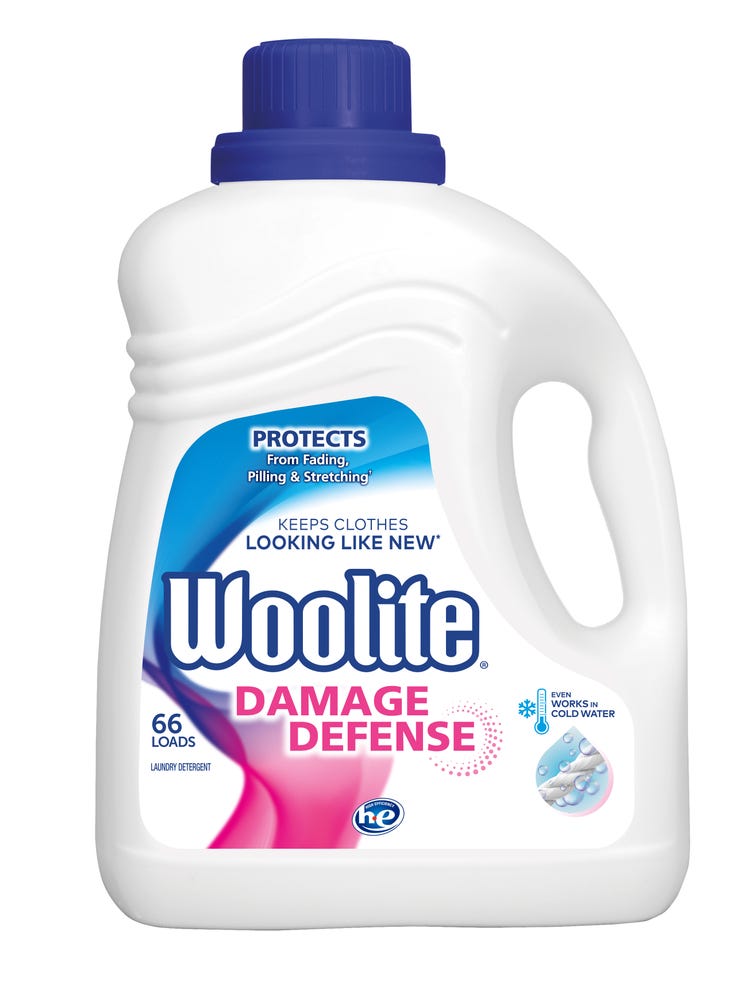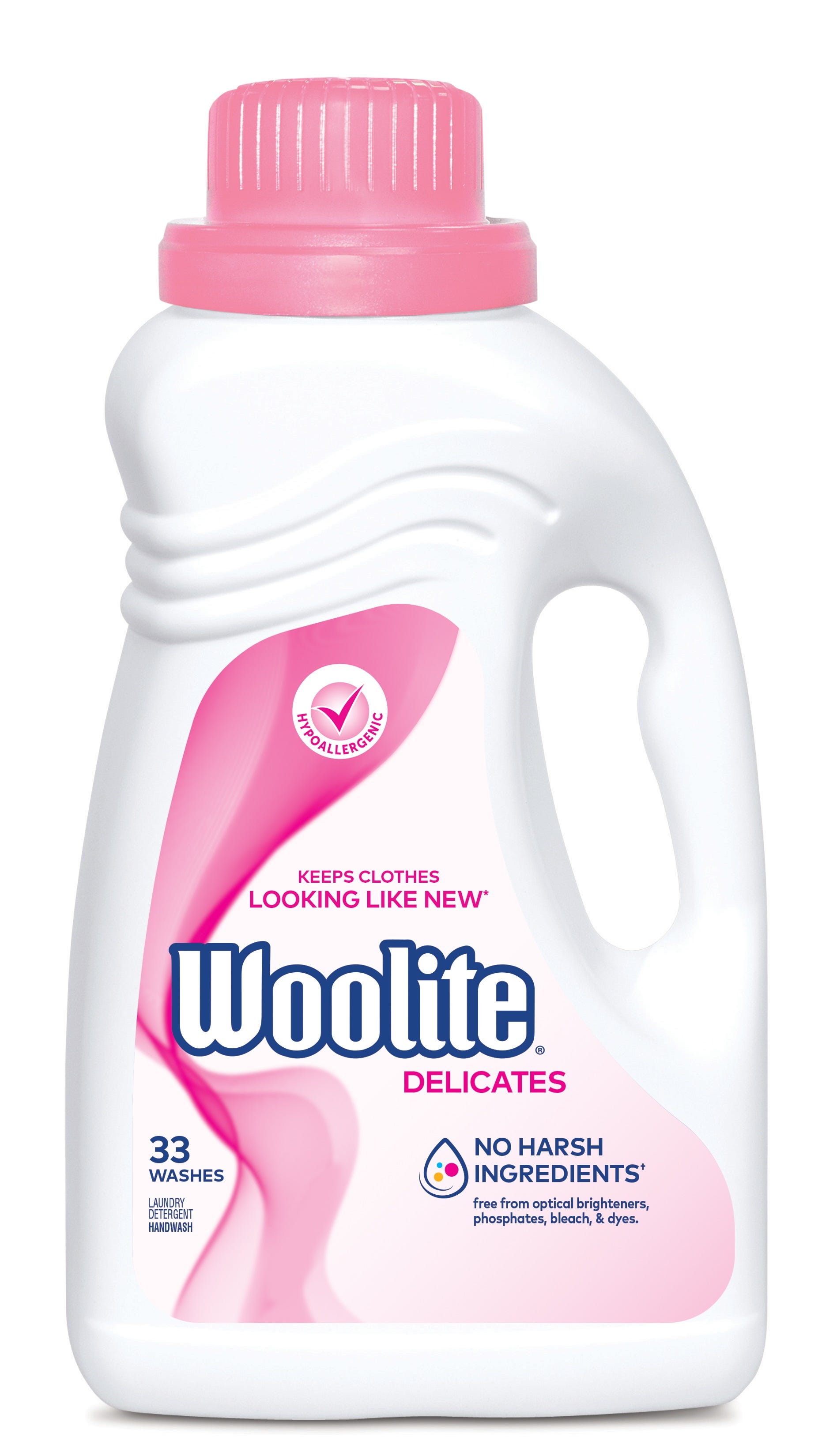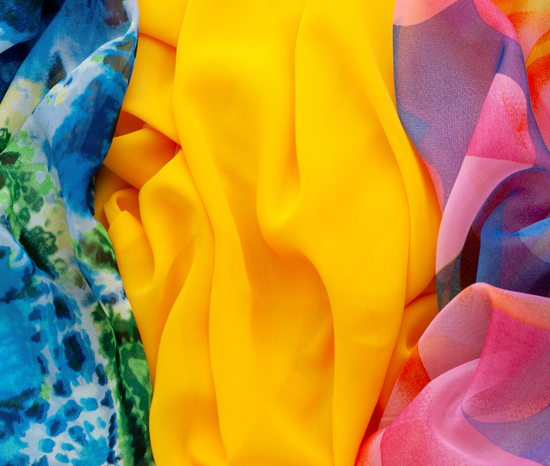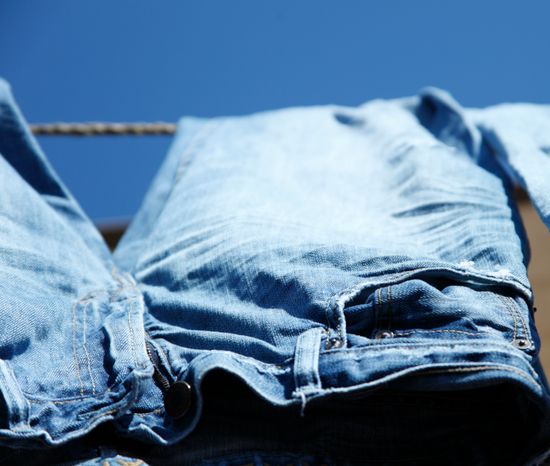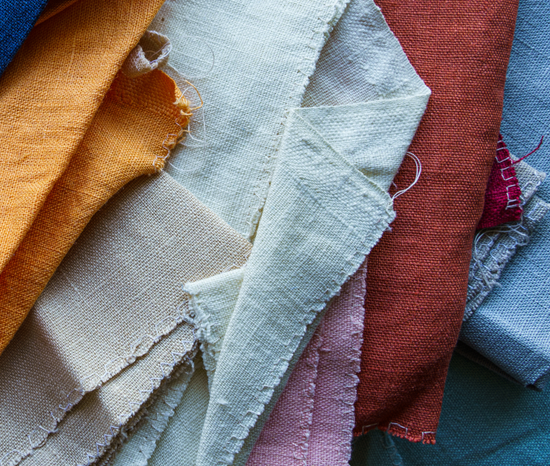How to clean polyester & synthetics

The most effective ways to wash polyester items at home
Well-liked because of its durability, quick-drying properties and resistance to wrinkles, polyester is often found in our most worn pieces of clothing – from school uniforms to work shirts and even sportswear. In fact, if you look around your home, you may even find that your curtains, furnishings and even your luggage is made from polyester, too!
If you want to know how to wash polyester at home, the answer is simple. Read on to learn how to wash polyester clothes, furnishings or even bags with ease, thanks to our handy guide.
Tips to care for polyester garments
Even though polyester is a popular fabric for clothing, there are some key nuggets of information that you’ll need to know before you start to wash your items, to keep them looking their best:
Turn it inside out – a handy tip to ensure your favorite polyester-knit items survive the wash is to turn them inside out to prevent any snags from happening.
Low heat works best – when washing, drying or ironing your polyester garments use a low to medium heat as the fabric is heat sensitive.
Air it out – excessive heat can cause your items to melt, so it’s best to air dry them instead of popping it in the dyer.
Store it properly – even though polyester is fairly wrinkle-resistant, storing it correctly means you may not have to bring out the iron.
Use the right products – products with too many chemicals run the risk of damaging the fibers of your fabric.
How to wash 100% polyester
Ever noticed your hair standing up end after you’ve pulled on a sweater or shirt?! This can often be a sign that your garment is 100% polyester, as the fabric is prone to static build up when it’s not blended with any other materials.
A man-made fabric, polyester (or more so, the fibers used to create it) is strong, lightweight and colorfast. Polyester is highly stain-resistant, which makes it simple to clean. With the right method and high-quality products, 100% polyester is a breeze to clean.
For the best results, just follow the below steps using Woolite® Damage Defense (or Woolite® Darks Defense laundry detergent if you’re washing darker garments) for a simple and effective wash:
Usage instructions – Top loaders
Select appropriate washing cycle
Follow the garment label instructions for water temperature
Fill machine with water
Pour a dose of Woolite® Damage Defense or Woolite® Darks Defense into water. For medium load washes, fill the measuring cap to line 1
Add garments
Usage instructions – Front loaders
Select appropriate washing cycle
Follow the garment label instructions for water temperature
Pour a dose of Woolite® Damage Defense or Woolite® Darks Defense into dispenser/drawer. For medium load washes, fill the measuring cap to line 1
Add garments
Always check the label before washing.
How to wash a fleece jacket
There’s nothing better than snuggling up in your warmest fleece jacket on a cold winter’s day. But, as you busily go about your daily activities, your fleece jacket can trap body odors and become victim to a range of spills and stains.
Fortunately, fleece is actually made from polyester, which means it’s relatively easy to clean. So, how you wash polyester will be the same as how you wash a fleece jacket. Woolite® helps to gently clean fabrics, meaning your favourite jackets will survive the wash, time and time again*!
To wash a fleece jacket, simply repeat instructions above. But, if you’re particularly worried about your item, you can use Woolite® Delicates for handwash. Just follow the hand washing instructions below:
Usage instructions - Handwash
Fill a sink or wash tub with cold water unless label instructs otherwise
Using the measuring cap, fill the liquid up to line 1, pour into water and stir with your hands
Wash gently by hand
Always check the label before washing.
How to wash acrylic yarn
Learning how to care for acrylic fabric is as easy as 1-2-3. Unlike an organic wool fabric, acrylic yarn is colorfast and resistant to shrinking. This means you can throw your favourite acrylic sweaters, scarves and knits into the wash with the rest of your clothes, but it’s best to wash with similar fabrics – to prevent your fabric from snagging on jean buttons or jerseys with zippers. Just add a little Woolite® Damage Defense or Woolite® Delicates laundry detergent, and you’re good to go!
If you would prefer to be extra cautious, you can hand wash your acrylic knits using Woolite®, too. Plus, our special formula won’t cause fading, shrinking or stretching*.
To wash acrylic yarn in the washing machine, just follow the instructions above. Remember to either lay your knits flat to dry, or use a low temperature in the dryer to ensure your items don’t lose their shape.
How to clean nylon fabric
Another synthetic fabric, nylon is often used for sportswear and swimsuits for its sweat-wicking properties and light, airy feel. After a long day at the beach, it may be tempting to throw your swimsuit in the washer with the rest of your items, but regular machine washing can cause the nylon fabric to discolor and lose shape.
If you want to know how to wash swimsuits in the washer safely, it’s best to use a gentle cycle with cool water. However, to make sure your nylon swimsuit continues to look like new all summer, we recommend hand washing it with a dose of Woolite® Delicates laundry detergent instead.
How to care for rayon fabric
Although rayon is a man-made fabric, it’s actually produced from natural wood pulp which means it can imitate the look and feel of more natural fabrics like silk, cotton and linen. Despite it being man-made, it is still a relatively delicate fabric, so care should be taken when washing and drying.
So, how do you wash rayon without it shrinking? For the best result, we recommend using a cool temperature in the washer, and air drying your rayon garment instead of using the dryer. Alternatively, you can always hand wash your rayon items using a dose of Woolite® Delicates laundry detergent.
* Woolite® products are formulated to handle your items to ensure it won’t cause fading, shrinking or stretching, based on ASTM standard test method.
Top tips on caring for your clothes
Take a look through our guides to find out the most effective way to clean a range of different fabrics.
